Virtual Sources
Virtual sources represent objects that can be moved around the Venue. They are made of one or more (stereo, multichannel) audio source(s), and can be freely positioned around the audience. Those sources include an acoustic simulation module (with reverberation), that can be automatically controlled by the position of the source.
There are three formats for virtual sources.
Mono sources can be positioned anywhere around the audience.
Stereo sources are composed of two Mono sources, their spacing is set by the Stereo Width. The position of a stereo object is set by its center and its Stereo Width.
Multichannel sources are composed of multiple Mono sources. Their layout can be manually adjusted, but will correspond by default to ITU standards.
Inspector Settings
Header Section
Virtual Sources all share the same Header settings documented in the Introduction for Sources. But Stereo and Mono Sources have some additional parameters: position, and stereo width.
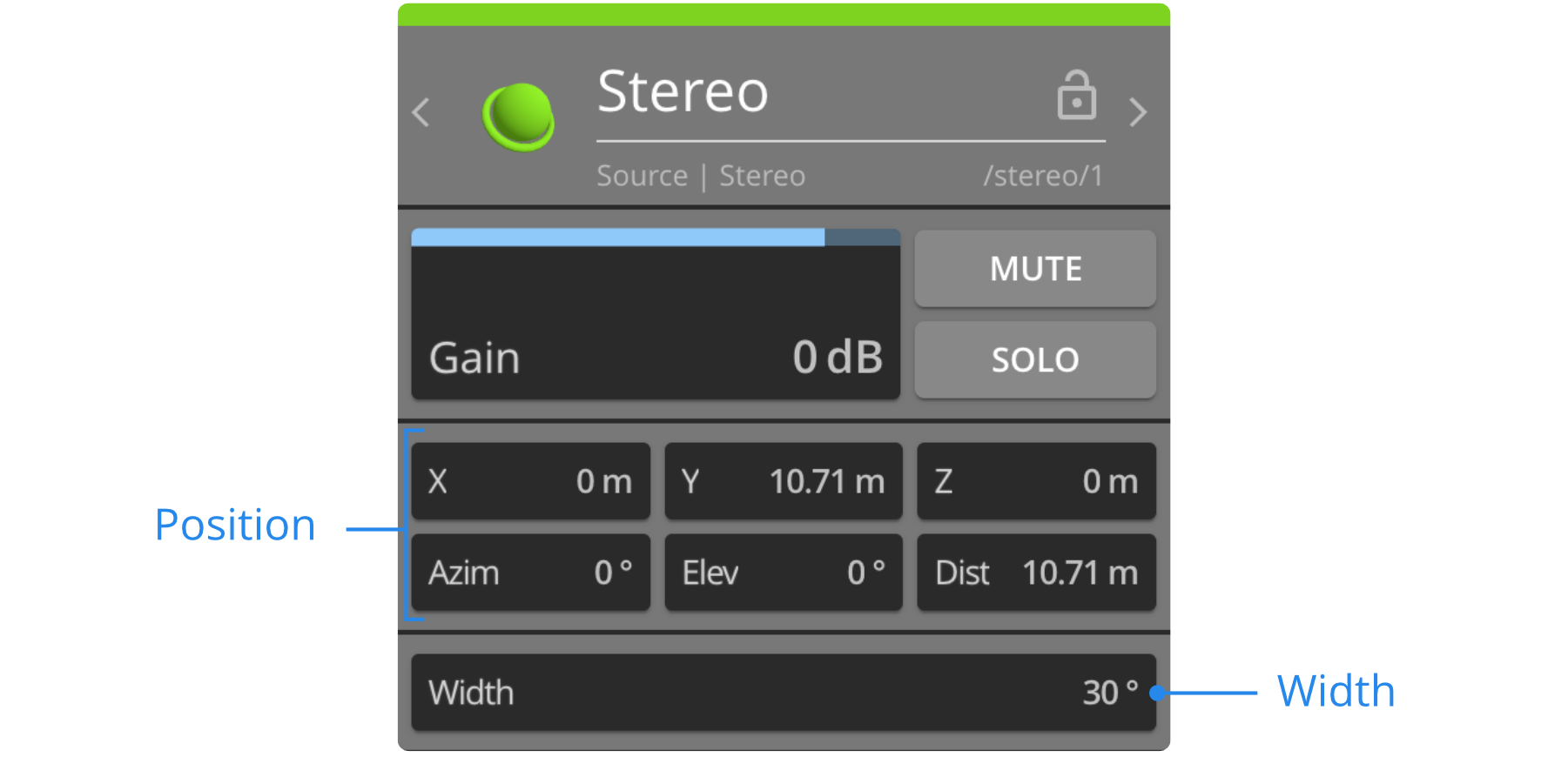
Position
Move or position the source directly in the Venue, or by entering its coordinates. Two coordinates systems are available: see Coordinates Systems for more detail.
Width
The Stereo Width sets the total spreading angle of the left and right channels around the center. For example, the default 30° width sets the left channel at -15° and the right channel at +15° around the center displayed in the Venue.
Tab Section (Mono & Stereo Sources)
Audio Tab
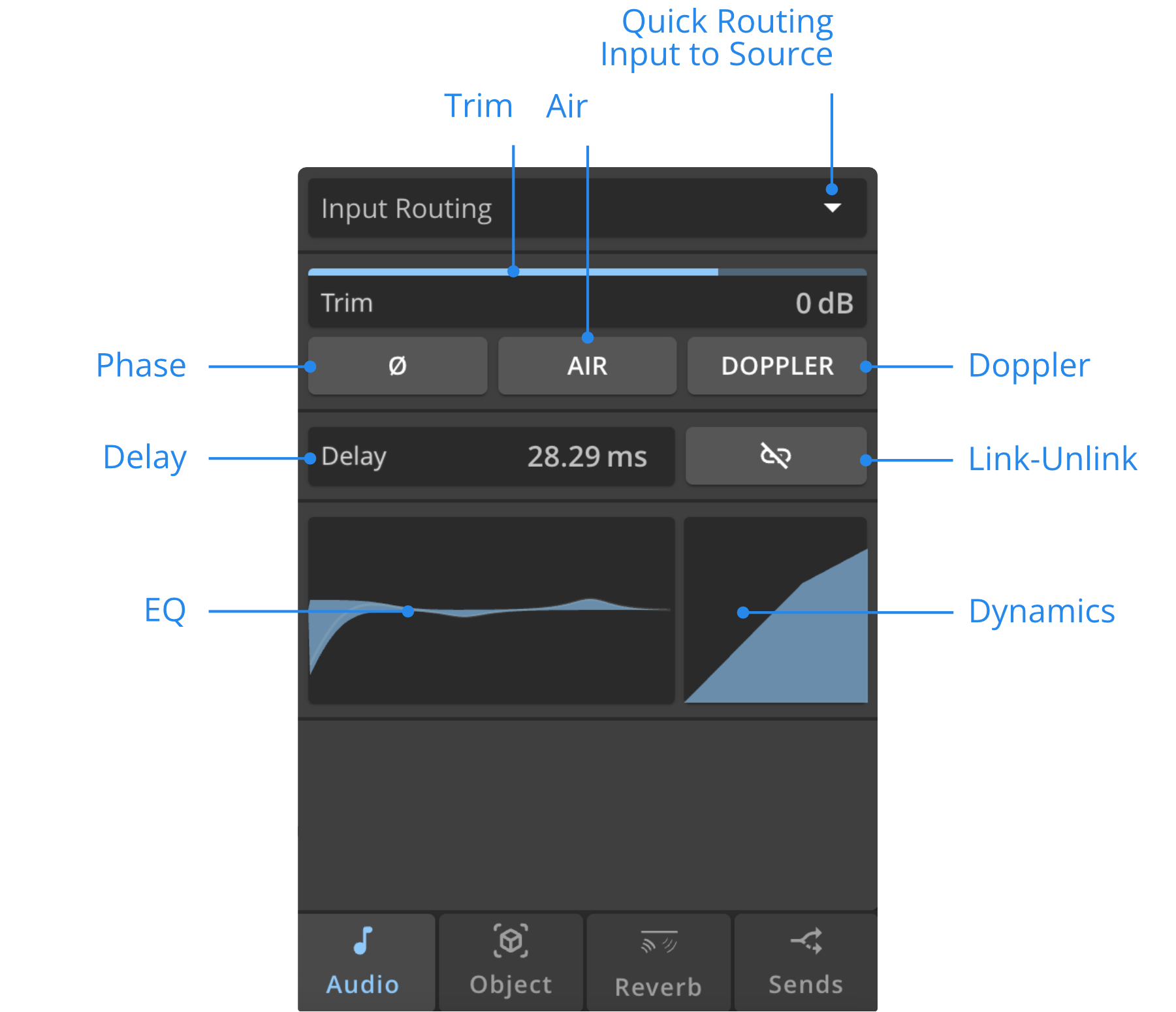
Doppler
Activate this option to simulate the Doppler effect when a source is moved, causing a pitch change.
Air
Activate this option to simulate the air absorbtion filtering with distance.
Phase
Activate this option to inverts the signal's phase.
Delay
This parameter is common to all sources. It is therefore documented the Tab section of parameters common to all sources.
EQ | Dynamics
This parameter is common to all sources. Check the Equalizer page and Dynamics page for more details.
Object Tab
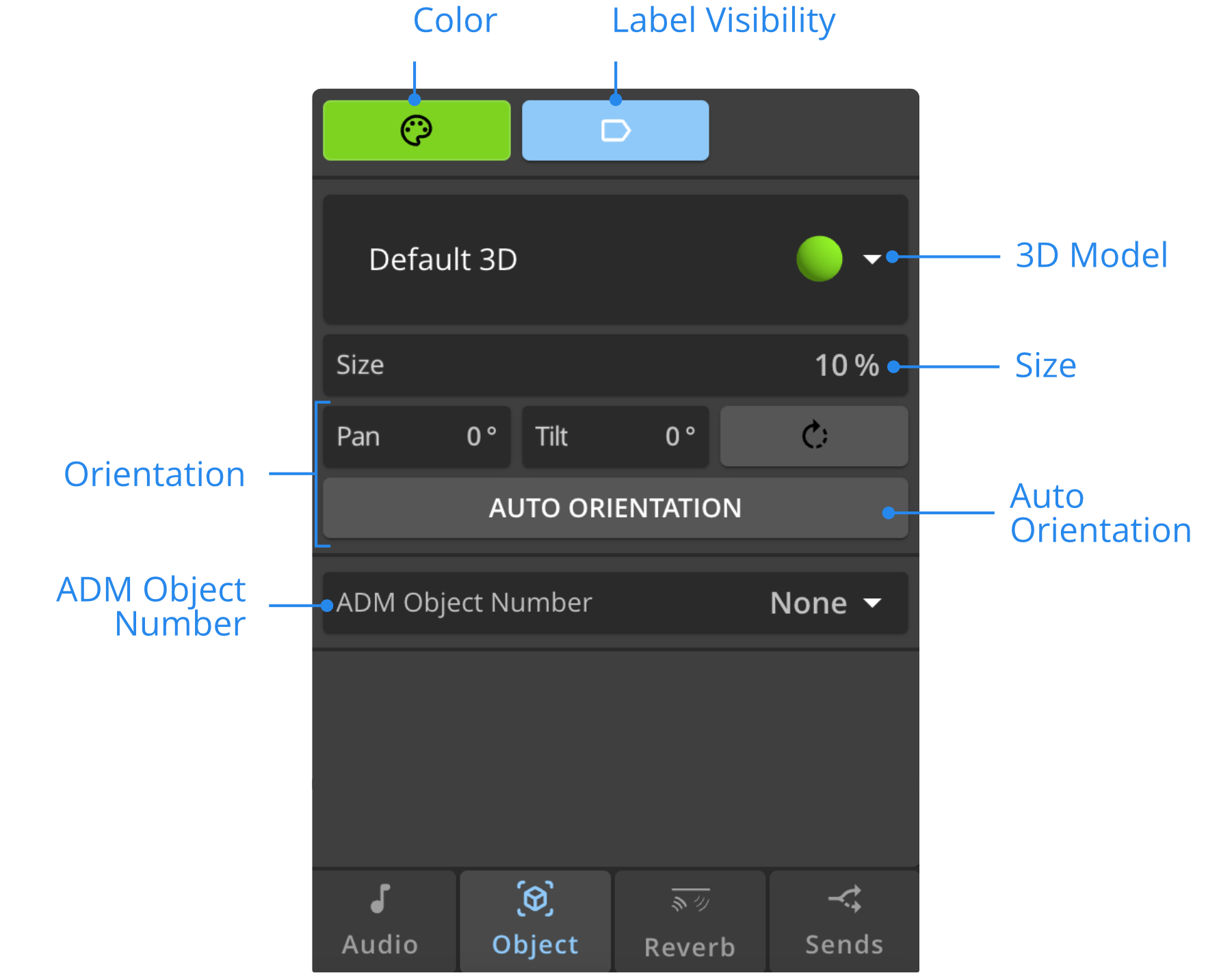
Color
You can change your element’s colour. To learn more about it, check the Color parameter in the Inspector page.
Label Visibility
Click on this button to display or hide the element’s label in the Venue.
3D File
Like for loudspeakers, the 3D model of the source can be changed to help identifying it in the Venue. Along with changing the source color, it can help you identify sources more easily in the Venue.
Size
The individual display size of each source can be adjusted with the Size factor. When the scale is set at 2, the displayed size will be twice as big.
Don't forget that you can adjust the size of all objects from the Display menu in the options bar.
Orientation
The orientation parameters only set the display of the 3D model. It has not impact over sound.
See the 3D orientation section of the coordinates system page for more details.
ADM Object Number
Use this parameter to set the ADM Object Number corresponding to its iteration in ADM-BWF file used to control this source over the ADM-OSC protocol.
Reverb Tab
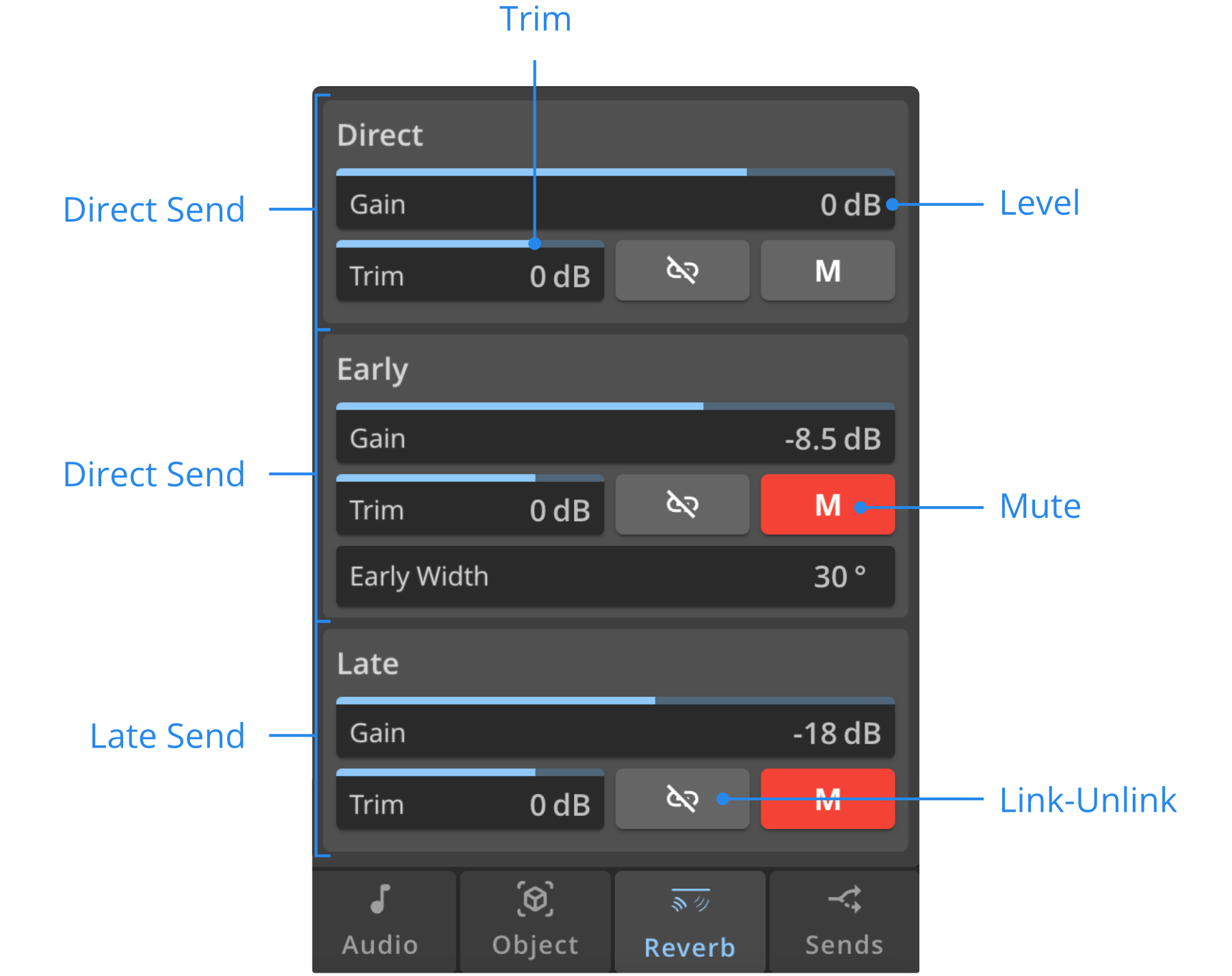
Direct, Early, and Reverb
Check the Reverb page for more information on source reverb settings.
Sends Tab
This tab is identical for all Sources. Check the Dedicated Section to learn more about it.
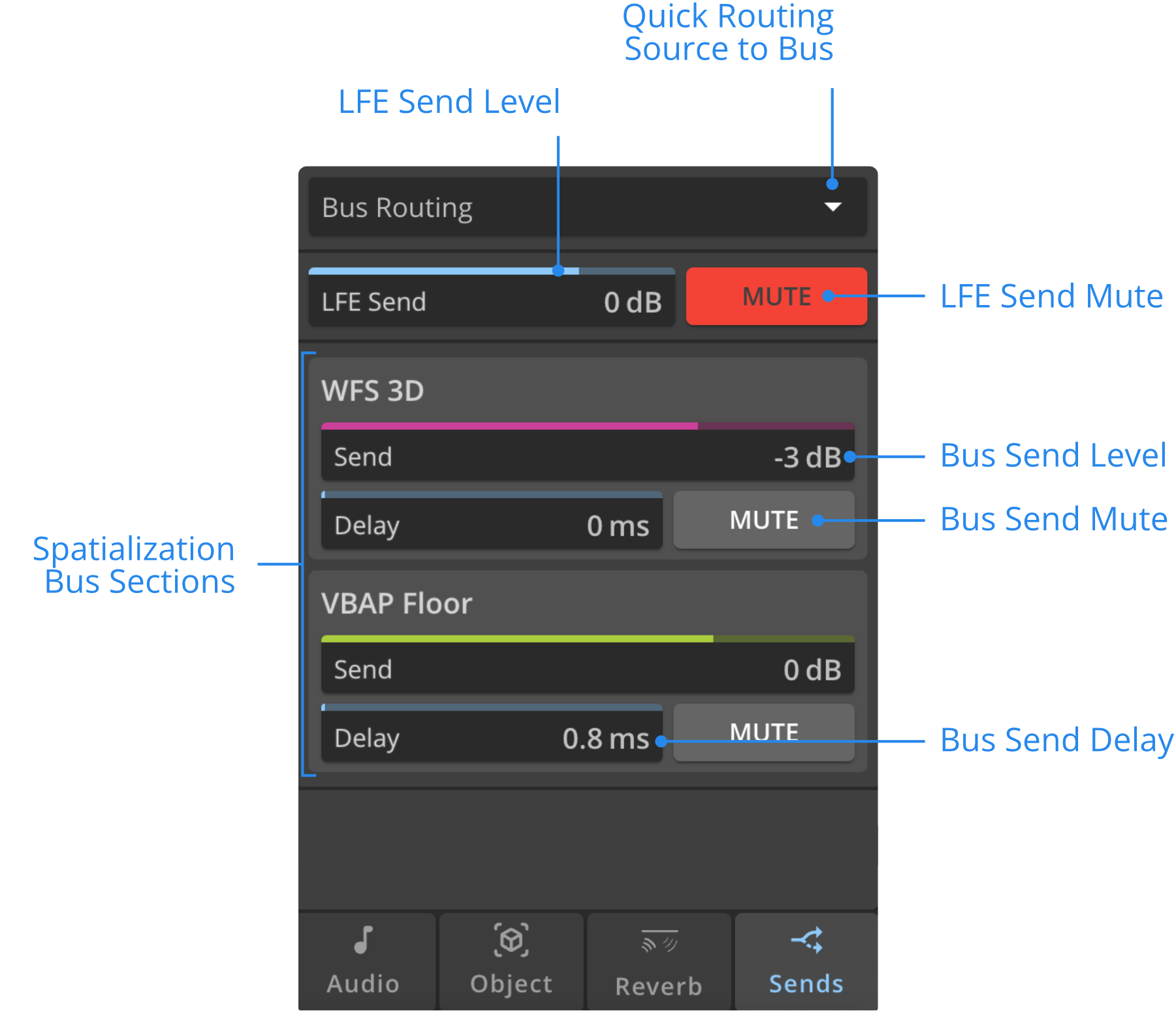
Multichannel
Position
The multichannel object can only be moved with the AED Distance coordinate. The layout can be edited with the Channels Parameters window.
Multichannel Parameters
The Object, Reverb, and Sends tabs are identical to Mono and Stereo Sources. However, the Audio tab is slightly different. Doppler, Air, and Phase are not available as Multichannel Sources are not meant to be in motion.
Use the Channels Parameters window to the position, gain and delay alignment of the individual channels of a Multichannel object.
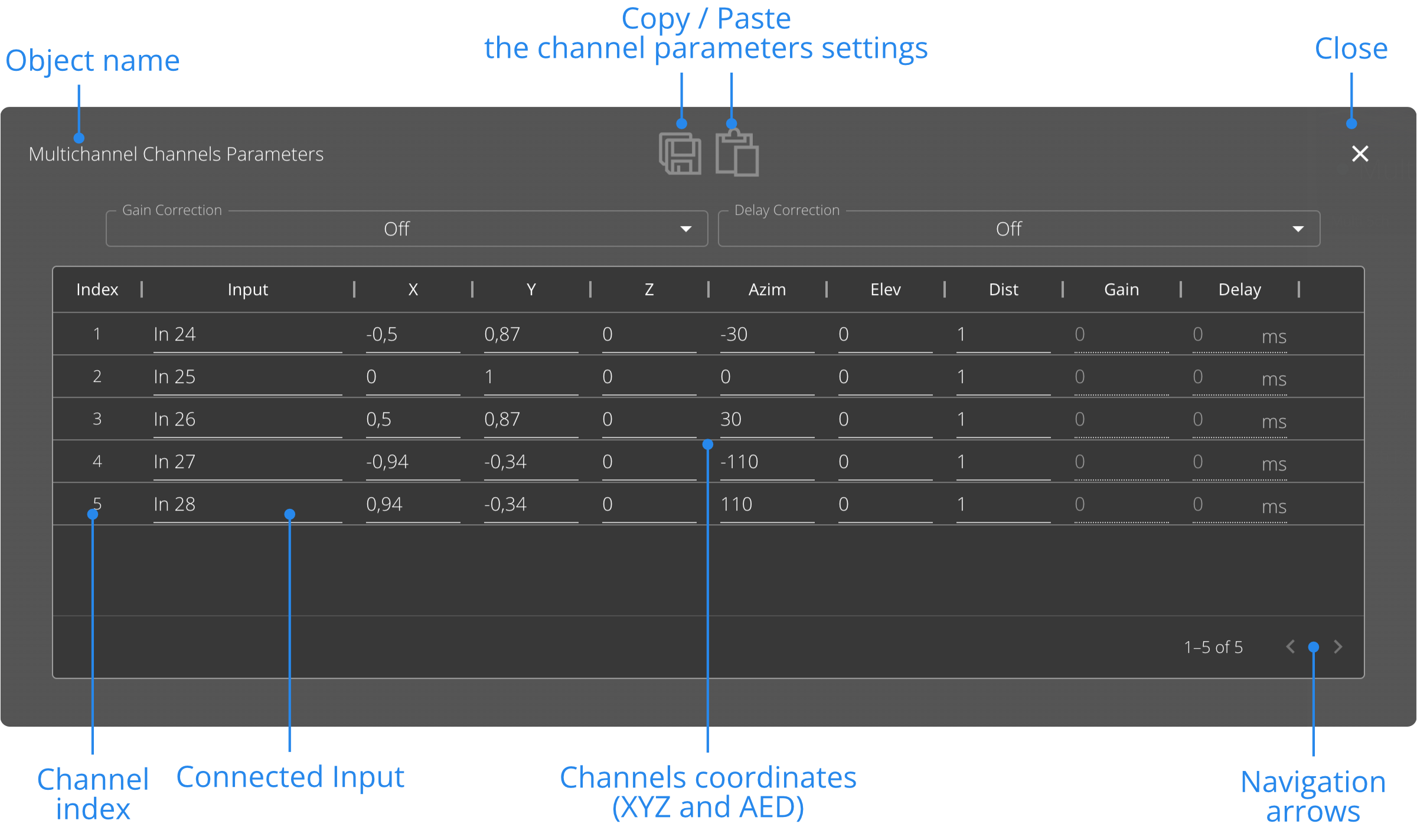
Input
This field indicates which input is connected to each channel composing the Multichannel object. If you need to connect a channel to another input, use the Routing view.
Channels Coordinates
Use the XYZ and AED columns to adjust the position of the channels.
The values entered in these fields correspond to the channels positions when the Multichannel object AED Distance coordinate is set to 1 meter.
If your Multichannel is set to another distance, the resulting distance of the channels will be multiplicated by that AED Distance.
Gain & Delay correction
The gain and delay corrections allows you to time-align and level-align each channel individually.
Three modes are available for both gain and delay correction, and can be selected from the two drop-down menus at the top:
Off
- It is the default setting. This will disable the gain or delay alignement.
Manual
- The manual mode will enable manually setting the gain or delay values.
Auto
- Auto mode will let HOLOPHONIX compute the gain and delay values for a perfect phase and level alignement at the center of the Multichannel object.
- Gains and delays are computed as if all the channels were placed on a circle or a sphere. By evaluating the distance between the virtual position on a circle and the real object position, HOLOPHONIX determines the delay and gain attenuation.
- Channels that are the closest to the center will receive a maximum delay and gain attenuation, whereas the farmost channels will receive no delay or gain attenuation.